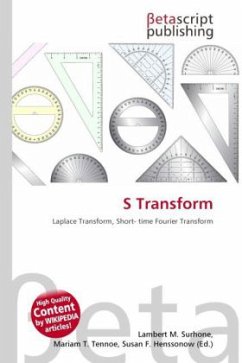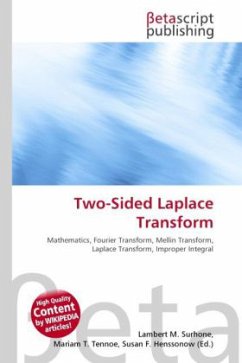High Quality Content by WIKIPEDIA articles! In mathematics, the S transform usually refers to the Laplace transform. However, S transform as a time frequency distribution was developed in 1994 for analyzing geophysics data. In this way, the S transform is a generalization of the Short-time Fourier transform, extending the Continuous wavelet transform and overcoming some of its disadvantages. For one, modulation sinusoids are fixed with respect to the time axis; this localizes the scalable Gaussian window dilations and translations in S transform. Moreover, the S transform doesn't have a cross-term problem and yields a better signal clarity than Gabor transform. However, the S transform has its own disadvantages: it requires higher complexity computation (because FFT can't be used), and the clarity is worse than Wigner distribution function and Cohen's class distribution function.
Bitte wählen Sie Ihr Anliegen aus.
Rechnungen
Retourenschein anfordern
Bestellstatus
Storno








